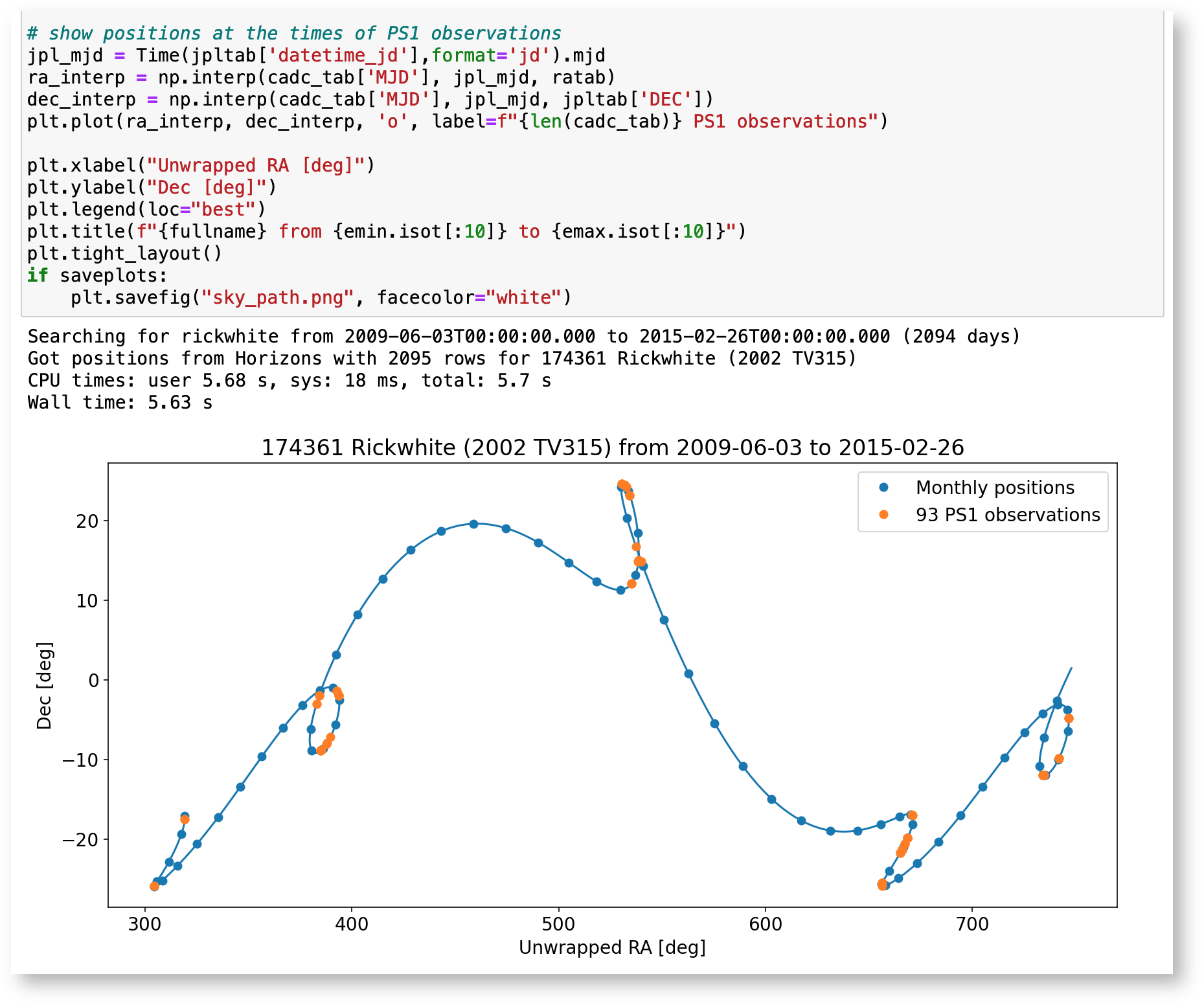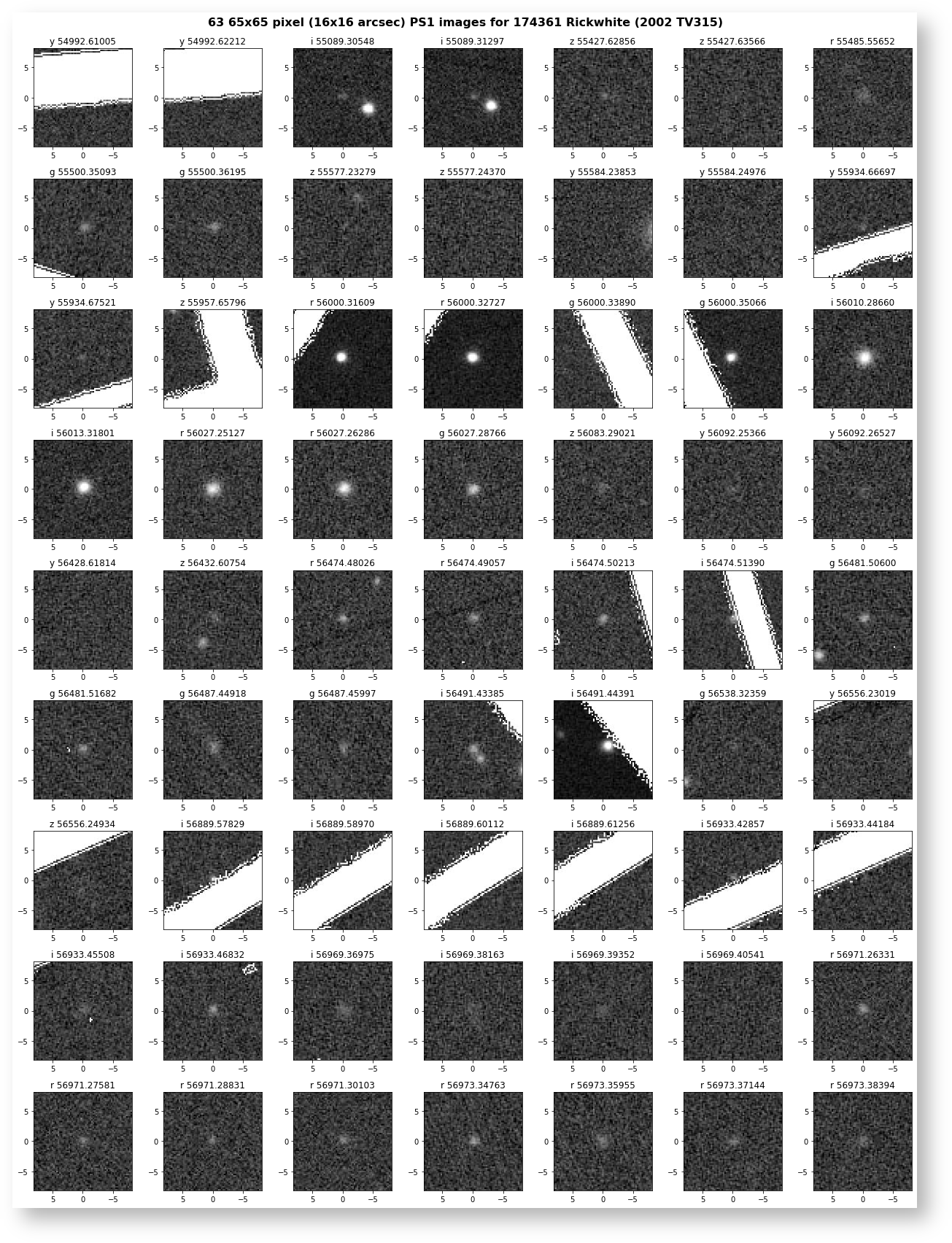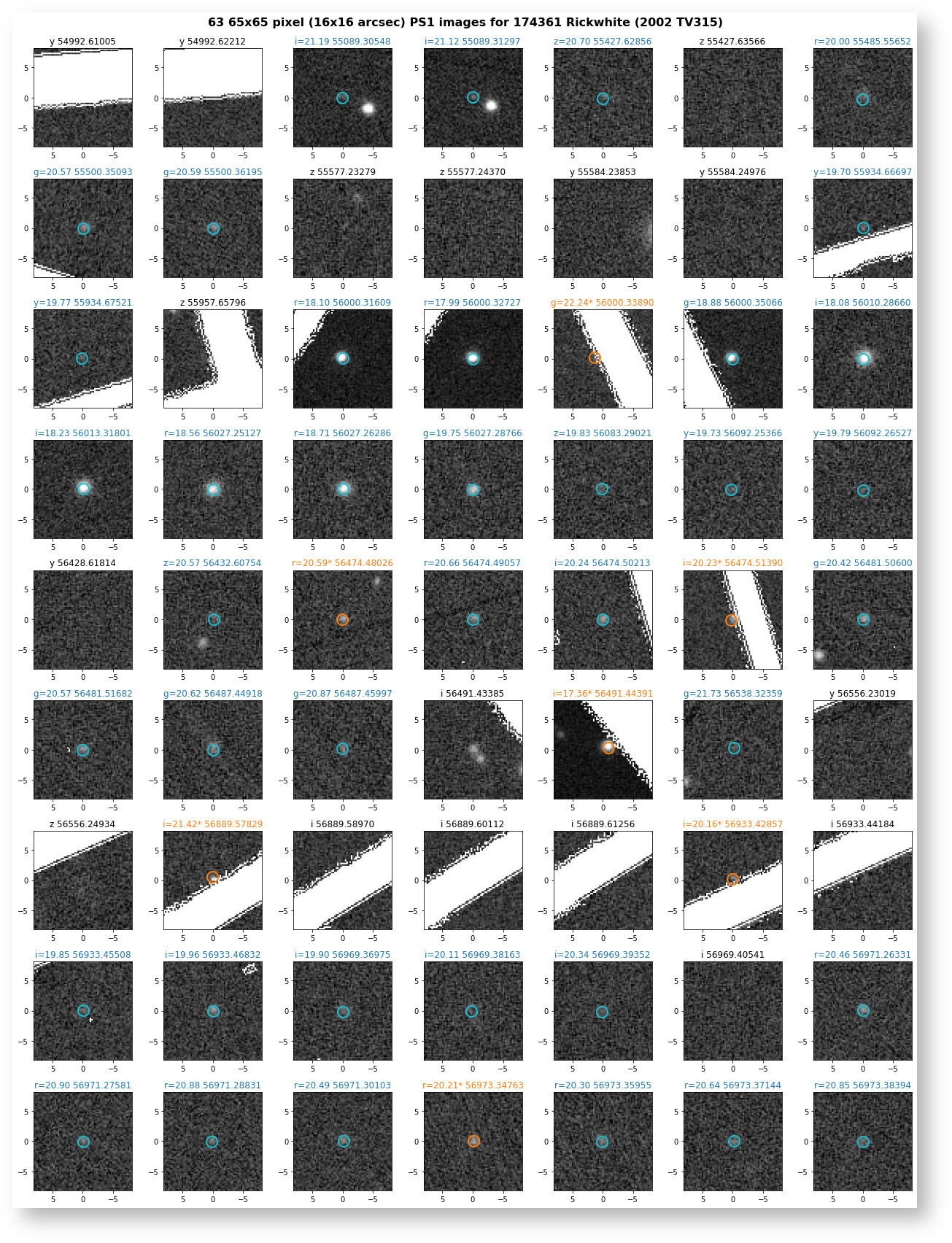Page History
The tools provided to search for Pan-STARRS1 catalog and to extract images rely on the target positions on the sky. For solar system targets, the position changes with time. This page describes an effective approach for using the known orbits of solar system targets to search both the images and catalogs for PS1 measurements. A Python Jupyter notebook shows an example, including all the necessary code.
| Table of Contents | ||
|---|---|---|
|
Overview
The sample notebook searches for Pan-STARRS1 catalog detections of the asteroid 174361 Rickwhite (2002 TV315). The Canadian Astronomy Data Centre (CADC) solar system image search API is used to get an initial list of PS1 observations. Then the JPL Horizons database is queried (using the astroquery.jplhorizons module) to get the position of the target as seen from the PS1 observatory on Mt Haleakala at the exact times of the PS1 observations. Those positions are passed to the PS1 CasJobs database where they are cross-matched with the PS1 detection catalog.
...
Here are the 63 images that include asteroid Rickwhite. These are 65x65 pixel cutouts (about 16x16 arcsec) centered on the ephemeris position. Some images fall in gaps between the chips, but for the other cases there is usually a faint object present at the expected location. The title on each plot gives the filter and MJD date for the observation.
Matching the list of object positions with the PS1 catalog finds 46 detections. Here is another plot of the images with the PS1 source position overplotted. Cases where there are bad pixels overlapping the object (as indicated by the psQfPerfect column) are marked in orange. Good measurements are marked in blue.
The third plot compares the positions from the PS1 catalog with the ephemeris positions from the JPL Horizons system. Again the objects with poorer quality data are plotted in orange. The 39 objects having good data agree very well with the predicted positions.
...





